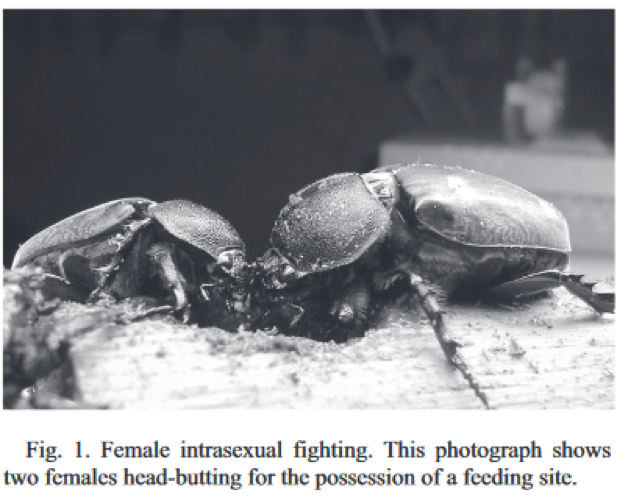
The eighth in a series from the blog Gender and Sexuality in Nature, a 2016 UC Davis course organized by UM EEB alumnus Ash Zemenick (UM EEB B.S. 2011, Ph.D. UC Davis 2017) and Jacob Moore (B.S. University of Washington 2009, Ph.D. UC Davis 2017).
Have you ever wondered if, how, or why animals engage in homosexual (same sex) behavior? In nature, homosexual, or same-sex sexual behavior, can take many forms. Two common homosexual behaviors include courting and mounting. Courtship includes any behavior used to attract a mate and can involve ornate displays and posturing, while mounting is the actual act of an animal climbing on top of another in the act of copulation. While homosexual behavior is common in nature, we are still learning what traits are associated with homosexual behavior, what genetic factors might contribute to homosexuality, and what benefits individuals can gain from homosexual behavior. We discussed papers that examined homosexual behavior across wide taxa, observing individual behavior, early life and mating strategies, and genetic factors that contribute to homosexual behavior.
Traits associated with homosexuality in birds
The first paper discussed examined factors that possibly influence or maintain same-sex sexual behavior in many bird species. This is an attempt to answer a wider question in the literature: What adaptive value, if any, does interacting sexually with an individual of the same sex provide if the behavior does not directly contribute to an individual’s fitness? To answer how same-sex sexual behavior is maintained in many bird species, the authors compared different mating strategies and the developmental stage of offspring at hatching. Mating strategies range from socially monogamous, where two individuals mate for life and rely on each for other things like nest building and gathering food, to obligately polygamous, where individuals come together only to mate and mate with multiple partners.
For materials and information on teaching sex- and gender-related topics in biology see www.projectbiodiversify.org/sex Reposted with permission and with the caveat that these posts are several years old and Project Biodiversify and other efforts like Gender Inclusive Biology and other LBGTQIA2+ people are always working to improve and update.

